The History of Subic Bay
A concise history of Subic Bay, charting 500 years of turmoil, conflict and occupation.
The history of Subic Bay reflects many centuries of war and turbulence. The Bay has strategic significance as a protected deep-water harbour. In turn, that has caused it to become a focus of maritime conflict for hundreds of years.
Subic Bay has been occupied by Spanish, Japanese and American military forces. It played a pivotal role in both the Spanish-American War and World War 2.
Origins of the Name
The name “Subic” has evolved over the history of Subic Bay. As such, it is influenced by the varied populations that have governed the area. It was derived from the native word “hubek”, which means “head of a plow”.
That name has persisted, although the spelling and pronunciation have changed over the ages. Spanish colonists interpreted it as “Subiq”, followed by early American influence changing it to “Subig”. Finally, its modern pronunciation became “Subic”.
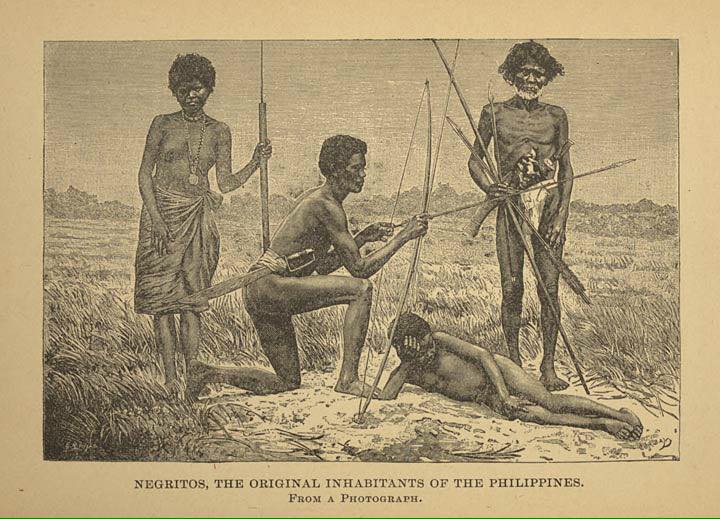
Spanish Colonization
In 1542, a Spanish conquistador and explorer named Juan de Salcedo first visited the bay. In doing so, he recognized its potential as a fine shelter for shipping. The area did not, however, become an operational harbour until over 350 years later.
The Spanish fleet transfered temporarily from Manila Bay to Subic during the British occupation of Manila (1762-1764). However, Subic was not actually developed as a port and harbour until the mid-1800’s.
The Spanish fleet was originally established in Cavite, Manila. But, this location increasingly suffered from sickness and presented strategic vulnerabilities. There was no shelter for the fleet from storms and enemy attack.
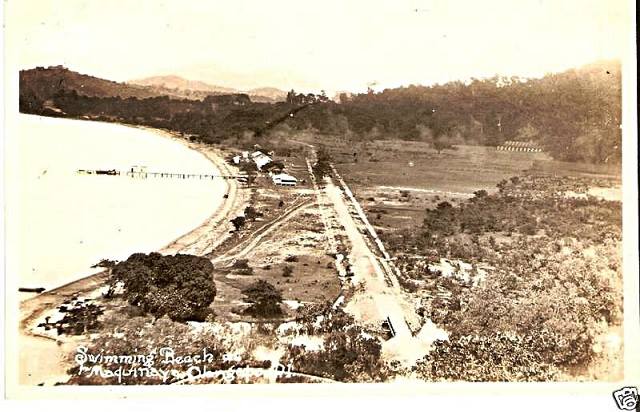
Barretto Beach
The Spanish survey Subic Bay
The Spanish first conducted a military survey in 1868. Consequently, in 1884, Spanish King Alfonso II issued a royal decree. He declared that Subic would be “a naval port and the property appertaining thereto set aside for naval purposes“.
The Arsenal en Olongapo
The construction of the ‘Arsenal en Olongapo‘ was authorized on March 8 1885. Work commenced on the arsenal and ship repair yard the following September.
The Spanish used local Filipino labor who were forced to work in lieu of tax payments. They dredged the harbour basin and built a drainage canal surrounding the port. This made the Navy yard into an “island”.
This canal reduced disease by draining the swampy terrain. Also, it served as a defensive barrier around the base. The canal still exists, surrounding the SBMA/SBFZ area, crossed by bridges into Olongapo town.
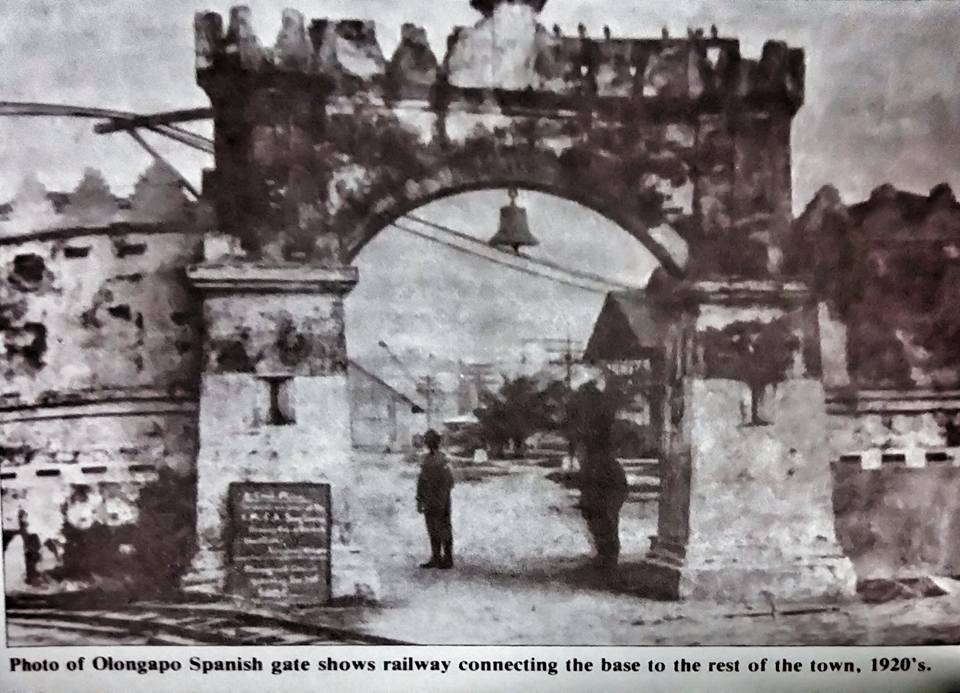
Several sea-walls, causeways and a railway line were constructed over the tidal flats bordering the shipyard. These required quarrying thousands of tons of dirt and rock from the Kalalake area of Olongapo. That former quarry now forms the lagoon at Bicentennial Park in SBMA.
When the Arsenal was finished, the gunboats Caviteño, the Santa Ana, and the San Quentin were assigned to its defense. These were complemented by gun batteries on the station and on Grande Island, in the mouth of the Bay.
American Rule (1898 – 1941)
The Spanish-American War commenced on 25 April 1898, when Commodore George Dewey, Commander of the U.S. Asiatic Fleet, received word that war with Spain had been declared. Consequently, he sailed from Hong Kong to attack the Spanish fleet in Manila Bay.
In response, the Spanish naval commander, Rear Admiral Patricio Montojo, moved the majority of his fleet to Subic Bay. This was considered to be a more defensible position than Cavite. Montojo’s plan was to conduct a strategic ambush on the rear of the American fleet when they entered Manila Bay.
Spanish preparations to face the US Navy
Spanish preparations at Subic Bay included scuttling the San Quentin and two other vessels to limit access into harbor.
However, other critical preparations were not completed. The Spanish failed to install their four 6″ guns on Grande Island. In addition, they only laid 4 out of 15 available mines that they possessed into the mouth of the Bay.
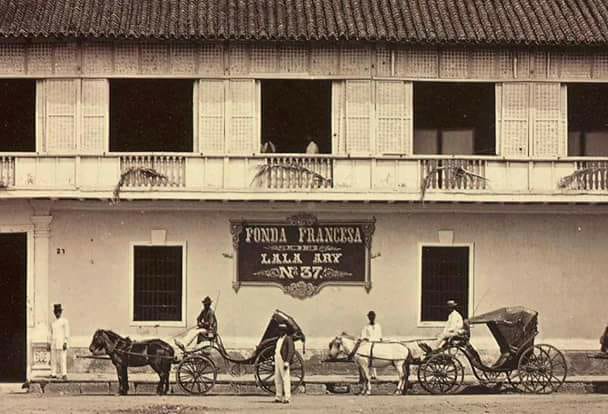
Montojo had suspicions that the Americans had been given intelligence about Spanish movements. Consequently, he scrapped his plan and returned his fleet to Manila Bay.
The US Navy arrives
At dawn, on the 1st of May 1898, the American fleet entered Manila Bay. US warships closed to within 5,000 yards of the Spanish fleet before opening fire.
As a result, the Spanish Fleet was totally annihilated, with 167 men killed and 214 wounded. In contrast, the American Fleet suffered no fatalities.
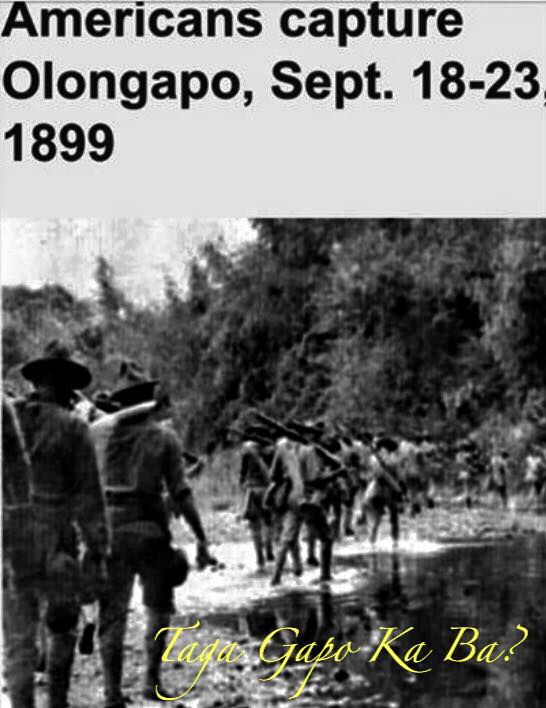
During the Philippine-American War, Filipino forces established control of the port and naval base. However, they were ejected by military action during the summer and autumn of 1899.
The American flag was finally raised over Olongapo in December that year, when the U.S. Marines took over operational and administrative control of Olongapo town.
The US did not occupy Subic until 1902
Subic Bay was not occupied by the American military until 1902. This was becuase of disagreements over the best strategic location for fleet base.
In 1900, the General Board of the United States Navy had recommended Guimaras Island, south of Manila, as the most suitable site for a naval base in the Philippines.
Admiral George Dewey argued for a base in Subic Bay
However, George Dewey, Admiral of the Navy, and Admiral George C. Remey, Commander of the Asiatic Fleet, disagreed. He insisted upon the strategic benefits of Subic Bay. Dewey and Remey were successful in their argument – and Subic was chosen.
“If we are to exert the slightest influence in Western Asia, it is of the highest importance that we have a naval station in Subic Bay.”
President Theodore Roosevelt
U.S. Congress approves funding for Subic Bay
Consequently, the U.S. Congress appropriated funds for the development of a major naval facility in Subic Bay. That amounted to $1 million ($27040000 in 2011 dollars).
However, in 1907, escalating tensions with Japan caused a shift in policy. More strategic emphasis was placed upon the development of a major base at Pearl Harbor, Hawaii. Consequently, all major work to further develop the facility in Subic Bay was ceased.
The facilities at Subic Bay were heavily involved in overhauling and maintaining the U.S. fleet during World War I.
War with Japan imminent
By the mid-1940’s, war with Japan was imminent. Consequently, the American military took measures to prevent the Japanese securing the strategic facilities at Subic.
On April 8, 1941, the ‘Dewey Drydock’ was towed to Mariveles Harbor, on the tip of the Bataan Peninsula, and scuttled there.
11 December 1941 – the Japanese attack Subic Bay
The worst fears were realized on the 11 December of that year, when Japanese Zero fighter bombers attacked Subic. They strafed and destroyed seven Catalina naval patrol aircraft in the harbor.
Evidence of Japanese intelligence gathering in the area was obvious, There where reports were being received about the approach of the Japanese Fleet – an invasion was predicted.
The U.S. Navy abandons Subic Bay
By 24 December 1941, the situation at Subic was deemed strategically untenable. Consequently, orders were given to destroy the station and withdraw. The U.S. military burned down the base, whilst local Filipino residents torched the town of Olongapo.
As a final measure, the armored cruiser U.S.S. New York was scuttled to deny the Japanese her four 8″ guns. The vessel was deemed to antiquated to be worth evacuating.
The U.S. Marines withdrew to the Bataan Peninsula. They were eventually evacuated under fire to Corregidor Island where they made their last stand before surrendering.
Japanese Occupation (1941 – 1945)
Throughout World War II, the Japanese Navy maintained a ship-building facility in Subic Bay. The area became infamous for the war crimes committed against Allied prisoners of war.
Baatan Death March
Especially so the Baatan ‘Death March’. This was the forced march of 67,000 U.S. and Filipino prisoners across Luzon. During this infamous march, many thousands pf POWs died or were executed.
Oryoku Maru ‘Hellship’
Likewise, the tragedy of the Oryoku Maru ‘Hellship’. This the prisoner transport ship. Only 400 out of 1360 POWs survived the bombing (by U.S. aircraft), sinking and subsequent mistreatment by the Japanese.

On the 20th October 1944, General MacArthur began the liberation of the Philippines – landing U.S. forces at Palo, Layte. By January 1945, the Japanese had virtually abandoned Subic Bay.
Expecting stiffer resistance, the U.S. Fifth Air Force had dropped 175 tons of bombs on Grande Island. In return, they received only light fire from the skeleton Japanese force remaining there.

General Tomoyuki Yamashita, the Japanese commander in the Philippines, withdrew his forces into mountains overlooking Subic Bay.
U.S. amphibious landing to liberate Subic Bay
On the 29th January, 40,000 American troops of the 38th Division and 34th Regimental Combat Team came ashore. They landed without resistance at San Antonio, Zambales, and advanced on Subic Bay.
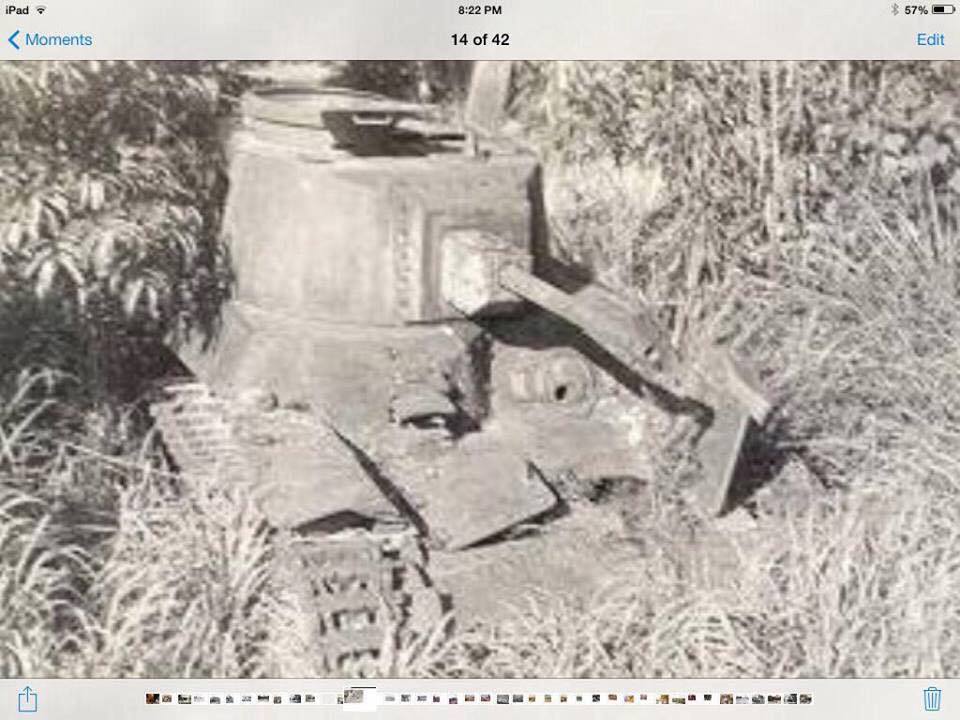
They didn’t meet their first resistance until attempting to cross the bridge spanning the Kalaklan River near the Olongapo Cemetery. However, that was swiftly overcome and Olongapo was swiftly liberated.
Sadly, the Japanese had decided to destroy Olongapo upon leaving. They left great destruction in their wake.
Post-War U.S. Naval Base (1945 – 1991)
Following the liberation of the Philippines, Subic Bay was designated Naval Advance Unit No. 6. As such, it became home to several submarine and motor torpedo boat units.
Grande Island was re-garrisoned with some 155 mm artillery and anti-aircraft weapons. Although, no plans were created to return it to the status of a permanent coastal defence installation.
By 1963, those guns had returned to the U.S. Subsequently, Grande Island was used solely as an R-and-R area for U.S. fleet personnel.
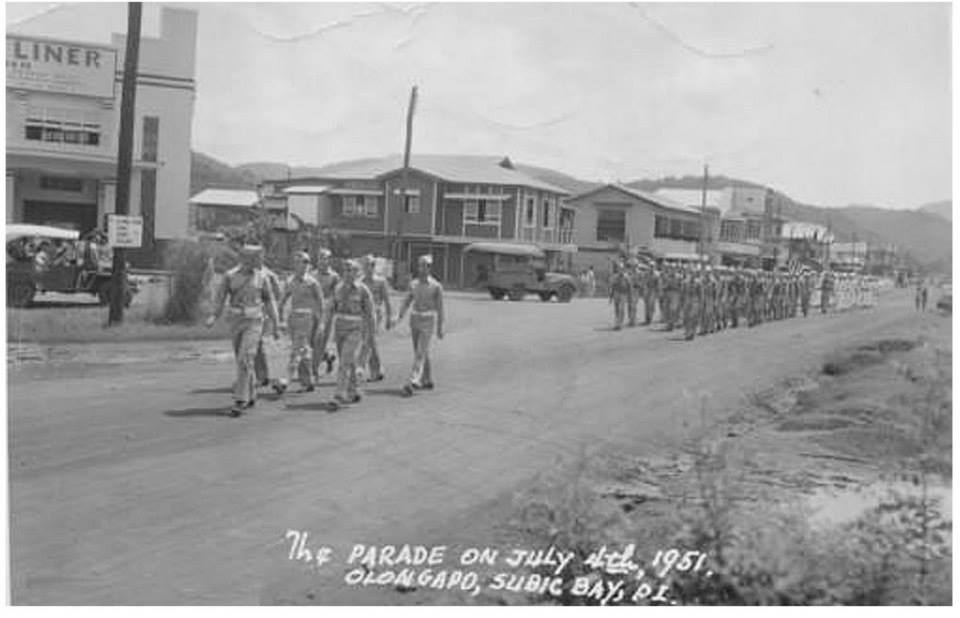
Independence was granted to the Philippines on the 4th July 1946. However, the town of Olongapo remained under the administration of the U.S. Navy.
The Military Bases Agreement
This was formalized on the 14th March 1947, with the signing of the Military Bases Agreement. That treaty granted the U.S a 99-year lease for 16 bases or military reservations. It included Subic Bay and the administration of Olongapo.
The lessons learned during the Korean War illustrated the critical need for naval air-power. This led to the ambitious project to develop a Naval Air Station at Cubi Point, in the Bay.
U.S. Navy Seabees construct the Cubi Point Air Station
This immense task, conducted by the U.S. Navy Seabees began in 1951 and lasted 5 years. The project needed over 20 million working hours.
It was one of the largest earth-moving projects ever conducted. At the time, second only to the construction of the Panama Canal.
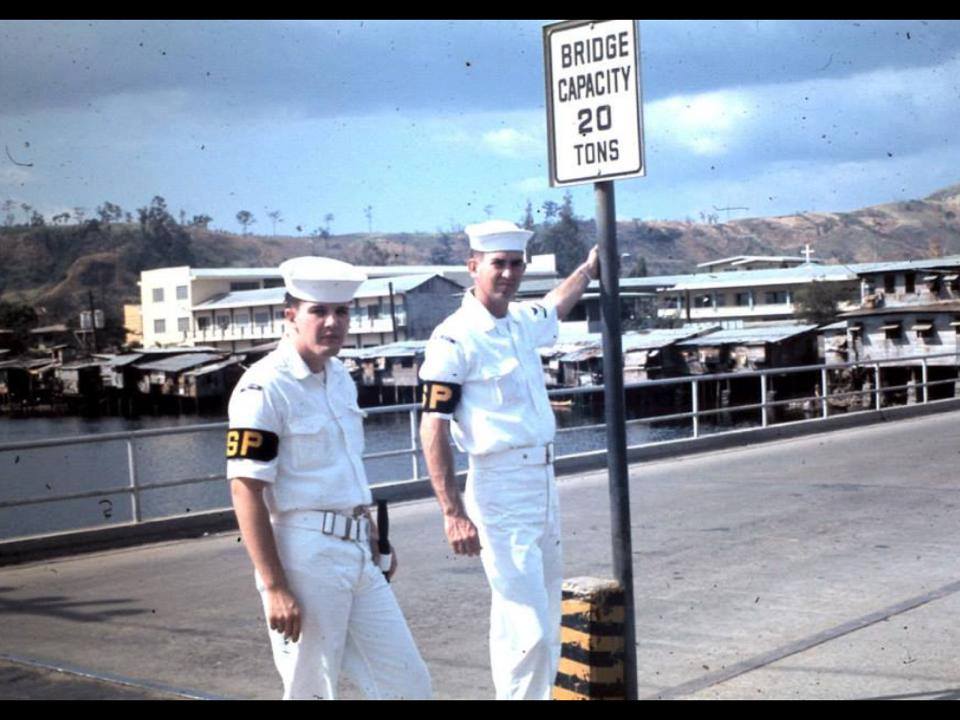
Mountains were literally flattened, dense rain-forests felled and vast quantities of earth piled into the sea. In total, the Seabees created a 2 mile (3.2km) long runway, air station and adjacent pier.
The project costed over $100 million ($718359853 in 2011 dollars). The facility was finally commissioned on the 25th July 1956. A comprehensive medical facility was also constructed on the base, and the U.S. Naval Hospital, Subic Bay, was opened on 13th July 1956.
U.S. investment in Olongapo City
The U.S. feared the rising tide of communism in Asia. As a result, efforts were made to prevent local resentment and hostility erupting in the Subic area. Over $1.5 million was invested in the town of Olongapo.
On the 7th December 1959, the U.S. relinquished administrative control of Olongapo town to the Philippines. This included handing over $6 million worth of electrical, water and telecommunications infrastructure.

The Vietnam War and Subic Bay
The steady expansion of U.S. military commitment in the Vietnam War had a significant impact on Subic Bay. As a result, the 1960’s saw a massive expansion in the base’s logistical, repair and R&R functions.
Over $63 million was invested in developing the infrastructure and facilities during this decade. That included a 600 ft extension to Alava Pier, in 1967, to increase berthing capability for the Navy. The record number of U.S. Navy ships berthed in Subic was set in October 1968, when 47 vessels were at harbor there.
The Naval Supply Depot and Cubi Point Air Station
The newly constructed Naval Supply Depot handled the largest volume of fuel oil of any Navy facility in the world. It processed more than 4 million barrels of fuel oil each month. The depot also supplied Clark Air Base with aviation fuel through a 41-mile (66 km) pipeline.
The Cubi Point Air Station served as the 7th Fleet’s primary maintenance, repair and supply center. At its peak, it maintained over 400 carrier-based aircraft. The facility produced two jet engines per day to supply the demands of the Vietnam air campaign.
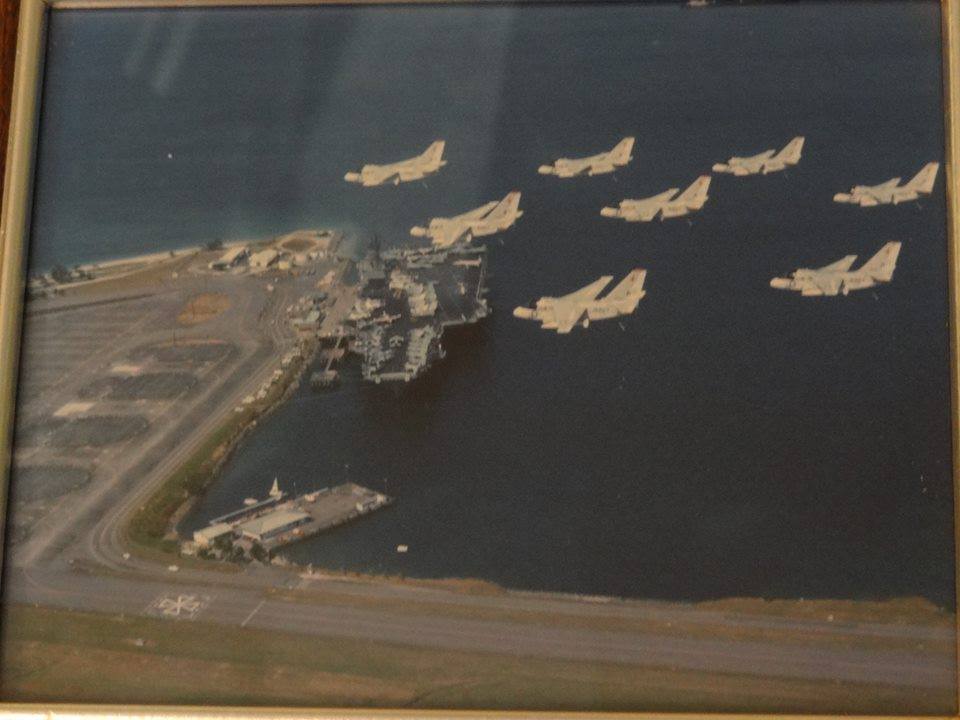
The fall of Saigon in the summer of 1975 led to hundreds of thousands of refugees fleeing Vietnam. Many of these refugees were rescued at sea by the U.S. Navy and transported to Subic Bay.
Vietnamese refugee processing on Grande Island
A temporary refugee processing centre was set up on Grande Island in 1975. However, operations were later moved to the Philippine Refugee Processing Center in Morong, Bataan.
The Naval Air Station was also used extensively during military campaigns in the Middle East. That included Operations Desert Storm and Desert Shield.
The 1947 Military Bases Agreement was amended in 1979. This asserted Philippine sovereignty over the base area and reducing the U.S. enclosure from 244 to 63 square kilometers.
Withdrawal of U.S. Military (1991 – 92)
On the 15th June 1991, Mount Pinatubo erupted with a magnitude 8x greater than Mount St. Helens. Unfortunately, the volcano is only 32 km from Subic Bay.
Mount Pinatubo eruption
All daylight disappeared as volcanic ash blotted out the sun. Volcanic earthquakes combined with heavy rain, lightning and thunder from the passing Typhoon Yunya. The result was a spectacularly ‘hell-like’ impact on the area.

Within 24 hours, Subic Bay had been buried below 30cm of rain-soaked, volcanic ash. In turn, this caused many buildings to collapse and the loss of electricity and telecommunications. The clean up and repair took many months.
The nearby U.S.A.F. base at Clark was declared a total loss and closed. This left Subic Bay as the U.S. military’s largest overseas defence facility. However, the base did not remain operational for much longer.
The Philippine’s Senate reject treaties with the U.S.
On the 13th September 1991, the Philippine’s Senate voted to reject ratification of the ‘Treaty of Friendship, Peace and Cooperation‘. That treaty was a pivotal agreement in extending the future lease of American bases in the Philippines.
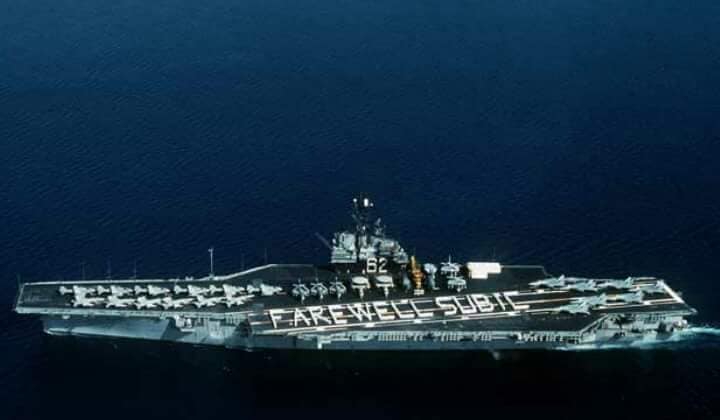
The U.S.A. and the Philippines continued to negotiate an extension that would allow a prolonged withdrawal of U.S. military. However, these talks broke down. There wereissues with the American withdrawal plans and concerns that the military were storing nuclear weapons in the base area.
President Aquino issues notice for the U.S. military to leave
On the 27th December 1991, President Aquino issued a formal notice. The U.S. military had to leave Subic by the end of 1992.
Over the course of 1992, vast quantities of supplies, equipment and transportable facilities were moved out of Subic Bay. The base was formally closed on the 24th November 1992. This marked the first time in over 400 years that no foreign military forces were present in the Philippines.
Subic Bay Metropolitan Area (1992+)
In anticipation of the U.S. departure, the Philippine Congress passed Republic Act 7227, on 13th March 1992. This Act was known as the ‘Bases Conversion and Development Act of 1992‘.
It served to create the Subic Bay Metropolitan Authority (SBMA). These were incentives to stimulate trade and investment through the foundation of the tax and duty-free. In essense, Subic Bay Freeport Zone (SBFZ), which was modeled on the freeport areas in Singapore and Hong Kong.
Richard Gordon protects the base infrastructure
As the final military left Subic Bay on the helicopter carrier USS Belleau Wood, locals took control of the base. Former Mayor of Olongapo and newly-designated SBMA Chairman, Richard Gordon, took over the facility. He recruited the help of 8,000 local volunteers to protect the now-vacant $8 billion facilities, property and infrastructure from looting.
Foreign investment in Subic Bay
The economy of SBMA has generally flourished since the U.S. military departure. It attracted several major foreign companies and caused substantial investment in infrastructure, port facilities and road communications.
FedEx’s Asia-Pacific hub, Asia-One, was located in Subic Bay for almost ten years. Also, Korean shipping manufacturer ‘Hanjin’ opened a $1 billion, 543 hectare, factory on the west side of the Bay. At the time, it was the 4th largest ship-building plant in the world.
Japanese investment also allowed the creation of the Subic-Clark-Tarlac Expressway (SCTEX) that links Clark and Subic Bay. It is still a vital route that allows swift communications.
Other significant companies attracted to the investment haven in the Bay include: Acer, Thompson SA and Enron.
Subic Bay hosts the APEC World Leaders Summit
Subic Bay also hosted the 4th APEC Leaders’ Summit on the 24th November 1996. The leaders of the world’s 18 most powerful economies, including Bill Clinton came to town. They were hosted at a purpose-built venue in Tiboa Bay, close to the former Air Station at Cubi Point.
The area is also developing a tourist infrastructure and can boast of many attractions. These include:
- Several good beaches
- Scuba diving on world famous shipwrecks
- A jungle survival school
- An aquarium and dolphin show
- The ‘jungle canopy tour’ and many jungle treks and tours.
About The Author

Andy Davis is a RAID, PADI TecRec, ANDI, BSAC, and SSI-qualified independent technical diving instructor who specializes in teaching sidemount, trimix, and advanced wreck diving courses.
Currently residing in Subic Bay, Philippines; he has amassed more than 10,000 open-circuit and CCR dives over three decades of challenging diving across the globe.
Andy has published numerous diving magazine articles and designed advanced certification courses for several dive training agencies, He regularly tests and reviews new dive gear for scuba equipment manufacturers. Andy is currently writing a series of advanced diving books and creating a range of tech diving clothing and accessories.
Prior to becoming a professional technical diving educator in 2006, Andy was a commissioned officer in the Royal Air Force and has served in Iraq, Afghanistan, Belize, and Cyprus.
In 2023, Andy was named in the “Who’s Who of Sidemount” list by GUE InDepth Magazine.






